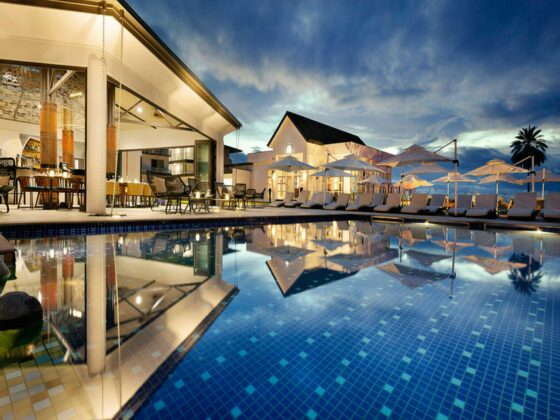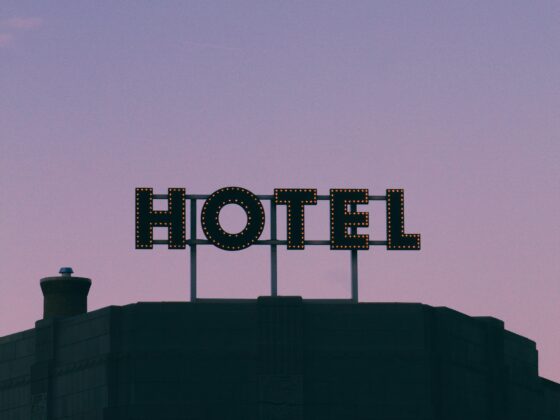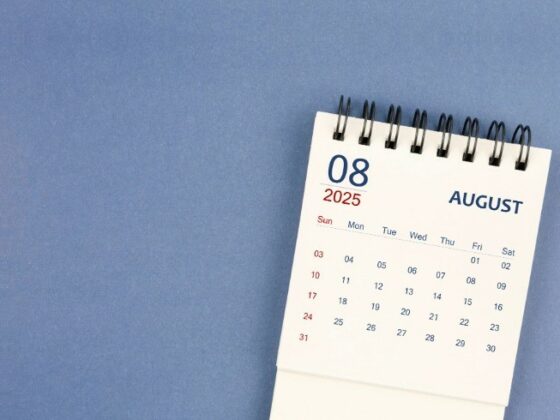A busy hotelier has just wrapped up their best August ever – traditionally it has always been a strong month, but this year it’s been non-stop action. Multiple sell-outs, countless rooms turned, and after closing the books, the overworked team is ready for a much-deserved breather.
Curious to see the final results, our busy hotelier exports an occupancy report from their PMS. With bated breath they see that the average occupancy rate for the month was 94% A new record! In fact, the hotel’s occupancy rate was so high that they aren’t sure whether to celebrate, or ask other hoteliers what exactly was going on this summer. Did they miss something crucial? Were they the lowest rated hotel for miles around? The hotel operator has a sneaking suspicion that their stellar occupancy performance may not necessarily be all rosy.
Unfortunately, analyzing your occupancy performance like this without additional context never tells you the full story. This is where benchmarking comes into play; your hotel’s occupancy as compared to your competitors tells a much fuller story, and better indicates whether you’re crushing the compset, or just patting yourself on the back while operating inefficiently.
How do we perform this kind of occupancy analysis? The answer is Market Penetration Index or MPI. In this guide we’ll explain why MPI is one of the most important KPIs in revenue management, and how to calculate and use this performance metric to the fullest to gauge your hotel’s occupancy performance vs. the compset and ultimately grow your market share.

How to calculate market penetration index (MPI)
Calculating MPI, like any index is thankfully quite easy. All you need to do is simply divide your hotel’s performance (in this case occupancy %, or occupied rooms) by the compset’s performance, and then add a multiplier for consistency. See the equation below!
The average compset performance becomes our ‘benchmark’, and because we’ve a constant multiplier, any MPI performance above 100 can be said to be above ‘fair share of the market’ and any performance below 100 is below ‘fair share’.
So, if your hotel ran 82% occupancy for the first two weeks of the September, and the compset maintained 80% for the exact same period, then your MPI would be 102.5 for that period.
Note that it’s important to compare your hotel’s performance and the compset’s performance for the exact same date range. This way you can ensure that you’re getting an accurate comparison.
Why MPI matters in a shifting hotel market
MPI is important because it gives you broader context for your hotel’s performance, and a way to objectively grade your own performance. You may consider 65% occupancy terrible performance for the month of July, but excellent performance for January, but until you understand the compset’s occupancy performance, you can’t know for certain.
Additionally, hotel markets are constantly shifting. Examples include seasonality shifts (changes in market occupancy as you transition from low season to high season), supply changes (renovations and new hotel construction), economic uncertainty affecting demand, and even short-term rental supply.
Monitoring your hotel’s MPI as you experience these inevitable shifts allows you to understand the effectiveness of your pricing and promotion strategies, offering a feedback loop that says “this strategy worked, let’s do it again”, or “this strategy didn’t move the needle, let’s abandon it”.
As we’ll mention shortly, MPI isn’t just a backwards-looking metric. By utilizing forward-looking benchmarking tools, you can identify abnormalities in MPI, and implement strategies before-hand that steer the ship in a better direction.
How MPI works with other hotel benchmarking metrics
Remember our fictional hotel at the start of the blog who had a blockbuster August? Let’s continue the hypothetical and assume they are now using a benchmarking tool to dive deeper into their performance.
They did indeed have a stellar month, in fact their MPI was a staggering 140! But… there is more to the story: Our busy example hotel had a paltry ARI index of only 72. The hotelier has a stark realization: they could’ve operated more profitably! Higher Average Daily Rate (ADR), RevPAR (Revenue per available room), and RGI could’ve been achieved by pricing higher!
A common example of how to use your MPI in combination with other benchmarking metrics is to combine MPI with ARI (Average Rate Index) to determine whether or not you are under/over pricing.
When MPI performance far outperforms the compset average and is coupled with a low ARI, the hotel is very likely underpriced. Potential guests see the hotel as a fantastic value and rush to book what they see as a can’t-miss deal. This leads to strong occupancy performance but poor rate performance.
By contrast, very high ARI coupled with low MPI signals that the hotel is likely overpriced. A few guests are booking at a very high rack rate, but most ordinary travelers who would’ve booked are scared away by overpriced room rates.
There are typically more subtleties to consider, but just remember that if you spot wide gaps between MPI and ARI, it can signal a faulty pricing strategy, and an opportunity to improve profitability.
Also by analyzing your ‘rank’ you can know exactly where your hotel stands in relation to the compset at a certain MPI. For example your hotel may typically rank #3 in your competitive set, but after a particularly strong week, or implementing a new strategy your hotel may rise in MPI rank up to #2, indicating an improvement in performance.
How to use MPI to improve hotel performance
MPI is both a retrospective metric showing how you performed in the past, but also can be a forward looking metric, indicating how your current on-the-books performance compares to the compset for an arrival date in the future in real-time.
For example, if last month you ran an aggressive marketing campaign, offering 20% discounts to guests staying at least 3 nights – and your MPI increased from 90 to 110, and your rank increased from #4 to #2 in the compset, you now have a very positive indicator that this kind of promotional strategy might be effective for the future.
The forward looking aspect of MPI allows you to implement changes now that will optimize future outcomes. Another example: If you have a low rank and low MPI for a future event date, you can implement strategies such as: lowering price, running promotions, or easing off on restrictions, and then monitoring how MPI and rank change in the lead-up to the event.
Common challenges and how to overcome them
Outdated compsets
An outdated compset is one of the most common issues that hoteliers face. In order to keep your compset fresh and your benchmarking efforts most efficient, consider reviewing your compset on strategy calls at least 2X per year. Even better, consider using Benchmark Insight’s dynamic Smart Compset whenever needed to ensure that you’re always comparing to the most relevant competitors.
Difficulty choosing an accurate compset
Choosing an accurate compset can be difficult because hoteliers often over-emphasize factors such as proximity, without considering other important factors such as hotel class, or similarity in room product. By using a tool like Lighthouse’s Smart Compset builder, this problem is eliminated by using a simple questionnaire that automatically builds the best possible compset based on how you rank for a variety of factors.
This process is possible manually, but requires an in-depth review and lots of manual analysis (for example, generating a SWOT analysis)
MPI consistently lower than the compset
This signal, especially when combined with a low MPI rank and high ADR signals that your hotel needs to boost occupancy. Consider getting more creative with marketing strategies, and promotional strategy. You may also benefit from reviewing your overall pricing structure. As yourself questions like: “Are my room types priced logically?”, “Does my pricing strategy across the week make sense based on my typical demand segments?”
MPI consistently higher than the compset
High MPI is most typically a problem when you also have a low ARI. Consider raising rates tactically on nights where you have excess demand. You are likely selling out before you have a chance to sell to the most lucrative customers, and may be selling out too early in the booking
MPI is only as good as your comp set
It can’t be stressed enough that an accurate compset is the only way to ensure that you get the most use from your MPI index. It can be tempting to ‘sandbag’ your compset, and stuff it with lower-end competitors that simply can’t perform at your hotel’s level. While this approach leads to show-stopping MPI and a boosted ego, in the long run you’d only be selling yourself short.
Always build a benchmarking compset of hotels that are credible competitors that attract similar guests, price in the same ballpark, and offer somewhat amenities. If you have doubts as to which hotels you should be adding, consider reading up and conducting additional research.
Once you have a solid compset, monitor it closely, and use features like benchmark insight’s Smart Compset to ensure that you are always getting the best data for both historical and forward-looking periods. Once you’ve incorporated benchmarking into your recurring strategy meetings, you’ll soon find that you’re a more effective and strategic hotelier, able to make more informed decisions and implement new strategies based on your MPI performance.
About Lighthouse
Lighthouse is the leading commercial platform for the travel & hospitality industry.
We transform complexity into confidence by providing actionable market insights, business intelligence, and pricing tools that maximize revenue growth.
We continually innovate to deliver the best platform for hospitality professionals to price more effectively, measure performance more efficiently, and understand the market in new ways.
Trusted by over 70,000 hotels in 185 countries, Lighthouse is the only solution that provides real-time hotel and short-term rental data in a single platform. We strive to deliver the best possible experience with unmatched customer service. We consider our clients as true partners—their success is our success.
For more information about Lighthouse, please visit: https://www.mylighthouse.com.














